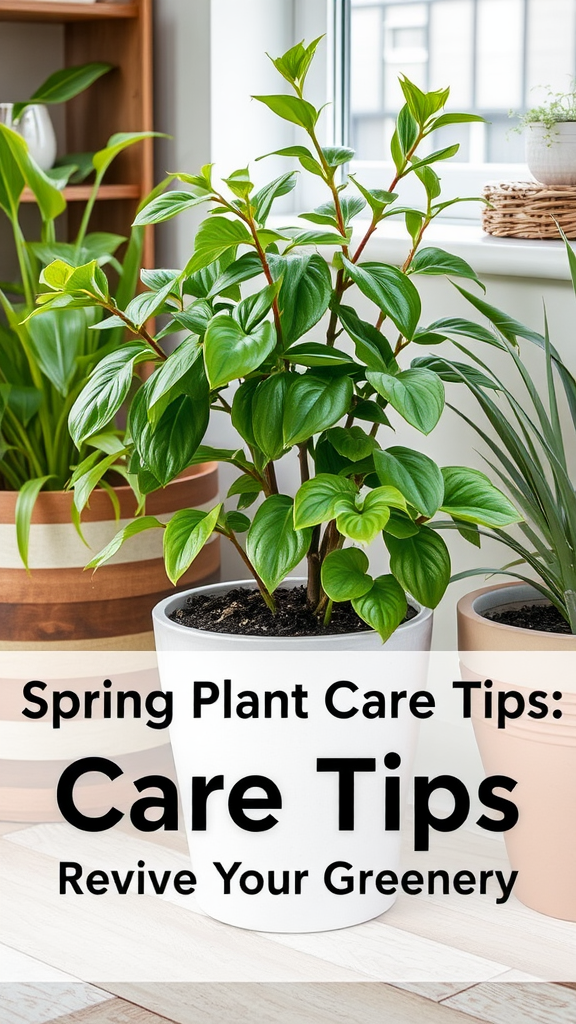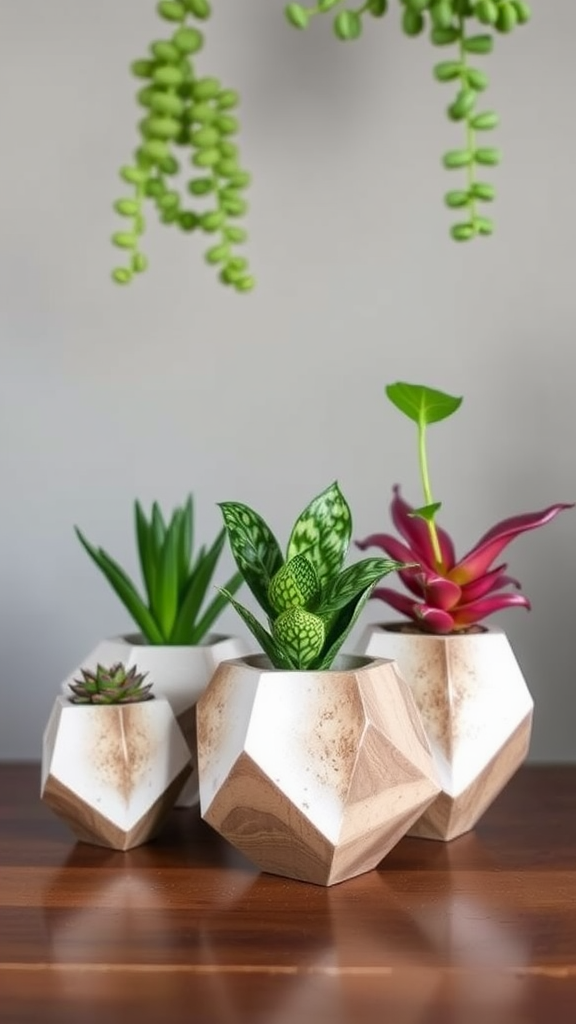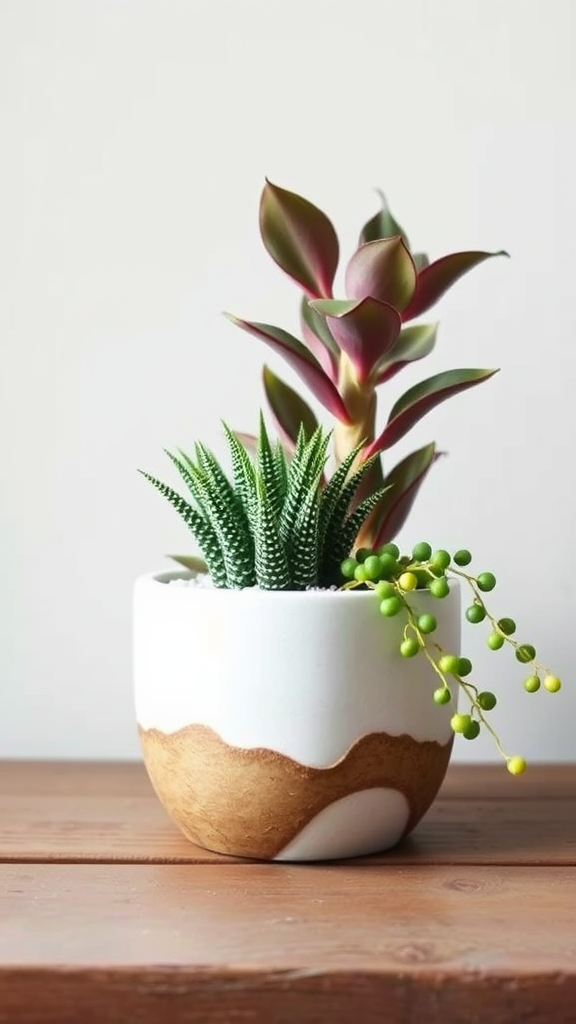Essential Spring Plant Care Tips to Revive Your Greenery
Spring is the perfect time to breathe life back into your garden and indoor plants. As the days grow longer and warmer, your greenery will need your help to thrive. Here are essential tips to ensure your plants revive beautifully this season.
Assess Your Plants’ Needs
Before diving into a care routine, take a moment to examine each plant. Check the leaves for any signs of stress, like yellowing or wilting. Look for pests or mold that may have taken residence during the colder months. By understanding your plants’ specific needs, you can tailor your care package effectively.
Repotting for Growth
As your plants wake from their winter slumber, they might need more room to grow. Consider repotting them if:
- The roots are sticking out of the pot.
- Water does not soak in easily.
- You notice stunted growth.
Choose a pot that is 1-2 inches larger in diameter than the current one. Use high-quality potting mix to give your greenery a nutrient boost.
Watering Wisely
Spring brings varying temperatures; therefore, your watering routine may need adjustment. Here are some key points:
- Check the soil moisture before watering. Stick your finger about an inch into the soil; if it’s dry, it’s time to water.
- Water deeply but infrequently to encourage root growth.
- Avoid over-watering, which can suffocate the roots and lead to rot.
Consider using collected rainwater for your outdoor plants; it’s rich in nutrients and beneficial for your greenery.
Fertilizing for Optimal Growth
Spring is critical for fertilizing. Your plants have used up many nutrients during dormancy. Begin with a balanced fertilizer that contains nitrogen, phosphorus, and potassium. Here’s how:
- Start fertilizing once a month.
- Follow the package directions for the correct amounts.
- Consider switching to an organic fertilizer for a gentle boost.
Fertilizing at the beginning of the growth season sets your plants up for success.
Pruning for Airflow
Winter can leave your plants with dead or damaged leaves and stems. Pruning helps promote airflow and encourages new growth. Follow these tips:
- Use clean, sharp scissors to trim off dead leaves and stems.
- Remove any weak or crossing branches to improve shape and accessibility.
- Do not over-prune; leave enough foliage for photosynthesis.
Regularly check for new growth as spring progresses, and prune as needed to keep your plants healthy.
Sunlight: The Key to Revitalization
As the sun reappears, ensure your plants are getting the right light. Some plants thrive in direct sunlight, while others prefer partial shade. Pay attention to:
- Moving indoor plants closer to windows if they need more light.
- Rotating pots to ensure even light exposure on all sides.
- Using sheer curtains to diffuse harsh sunlight for sensitive plants.
Monitor how your plants respond and adjust their lighting conditions as necessary.
Pest Management
Warmer weather can bring pests. Stay vigilant and check your plants regularly. Here are some natural ways to combat them:
- Use neem oil or insecticidal soap for mild infestations.
- Introduce beneficial insects like ladybugs to keep harmful ones at bay.
- Set up traps to catch pests before they can spread.
Keeping your plants pest-free will help them flourish throughout the spring and into summer.
By following these essential tips, you’ll breathe new life into your plants this spring. Make caring for your greenery a joyful part of the season, and watch your efforts bloom into stunning foliage and vibrant flowers.
Seasonal Pest Prevention Strategies for Thriving Plants
As the seasons change, so do the threats to your beloved plants. Seasonal pest prevention is key to keeping your greenery thriving and beautiful. Implementing effective strategies throughout the year will protect your plants and promote their health. By staying one step ahead of potential pests, you can nurture a flourishing garden. Here are useful strategies you can apply.
Evaluate Your Environment
Your plants thrive in a variety of conditions, but some environments make them more susceptible to pests. Observe your garden regularly, paying attention to any signs of infestation. Look under leaves, around stems, and in the soil for any unwanted guests. Maintaining a clean gardening area can significantly reduce pest populations.
Practice Good Hygiene
Maintaining a tidy garden environment is vital for pest control. Here’s how to ensure good hygiene:
- Remove dead leaves, decaying fruits, or any debris where pests can hide.
- Regularly wash your gardening tools to avoid transferring pests or diseases from one plant to another.
- Keep plants well-spaced to promote good air circulation and sunlight exposure.
Choose Resistant Varieties
Some plants have natural defenses against pests. When planning your garden, consider selecting varieties that are resistant to common nuisances. Research the plants suitable for your climate. Native plants often have evolved mechanisms to fend off pests effectively.
Companion Planting
Utilize the power of companion planting to deter pests naturally. Certain plants repel insects while others attract beneficial organisms. Here are a few pairings to consider:
- Marigolds can deter nematodes and other pests.
- Basil acts as a repellent for flies and mosquitoes.
- Nasturtiums can lure aphids away from more vulnerable plants.
Monitor Moisture Levels
Overwatering can create a conducive environment for pests like fungus gnats and mold. The right moisture level promotes healthy plants while diminishing pest populations. Aim to water your plants in the early morning, allowing leaves to dry throughout the day. Regularly check the soil moisture levels by sticking your finger about an inch deep into the soil. If it feels dry, it’s time to water.
Encourage Beneficial Insects
While some insects can be harmful to your plants, many are beneficial. They can help control pest populations naturally. Use these strategies to attract helpful insects:
- Plant flowers like daisies and yarrow to attract ladybugs and lacewings.
- Avoid using broad-spectrum pesticides that kill beneficial insects.
- Provide diverse habitats in your garden, such as small water sources and sheltered areas.
Introduce Natural Predators
Besides attracting beneficial insects, consider introducing natural predators to your garden. For instance, ladybugs and predatory mites feast on aphids and spider mites. You can purchase these insects online or at garden centers during the growing season. This allows your garden to form a balanced ecosystem where pests are kept in check.
Implement Physical Barriers
Physical barriers can significantly deter pests. Utilize the following techniques:
- Row covers are excellent for protecting tender seedlings from pests while allowing light and moisture in.
- Sticky traps can capture flying insects, such as whiteflies and fruit flies.
- Screens or mesh can keep larger pests away from your garden.
Timing Your Treatments
Seasonal timing is essential for pest management. As different pests emerge at various times throughout the year, adjust your preventive measures accordingly. Monitor pest activity and respond proactively. Spring is typically when pests begin to emerge, so be diligent with your observations during this time.
These seasonal pest prevention strategies will help your plants thrive. By understanding the lifecycle of pests and responding effectively, you create a robust environment for your greenery. Your garden deserves robust care, and by applying these methods, you’ll keep your plants healthy and vibrant through any season.
Conclusion
Reviving your greenery this spring requires a thoughtful approach to care and maintenance. By implementing essential plant care tips, such as proper watering, fertilization, and pruning, you can help your plants regain their vigor after the winter months. Maintaining a consistent routine will not only nurture your plants but also enhance their natural beauty, ensuring that your garden flourishes.
Equally important is the proactive management of pests that can hinder your plants’ growth. Seasonal pest prevention strategies, like regular inspections and the use of organic repellents, play a crucial role in keeping your plants healthy. By identifying pests early and addressing any potential threats, you can protect your greenery from damage and create a robust environment for growth.
Remember, your plants are a reflection of your care and dedication. With the right tips and strategies, you will not only revive your greenery but also cultivate a vibrant and flourishing garden. Whether you are tending to indoor plants or nurturing an outdoor space, integrating these practices will ensure that your greenery thrives throughout the season. As you embrace spring, take the time to nurture and enjoy the natural beauty around you. Your plants will reward you with their lushness, creating a vibrant oasis for you and your loved ones to cherish.





